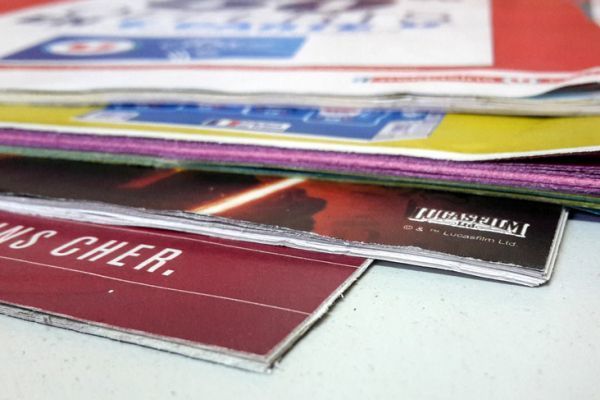Advertising has been married to paper for a very long time. Théophraste Renaudot created the first French gazette in 1631, opening it up to advertising. Advertising developed with the expansion of the daily press in the 19th century, especially after the July Revolution of 1830, which freed the press from heavy government control.
The birth of advertising agencies and the boom in advertising after the Second World War
The development of advertising, whose first agencies appeared in the early 20th century, went hand in hand with freedom of the press. A notion we must not forget.
With the development of consumerism, marketing investments, including advertising, grew exponentially, especially after the Second World War.
The written press, which lost its monopoly with the advent of radio in 1931, continues to capture a very large share of the market, despite the emergence of other audio and TV media, still accounting for around 40% of the national market at the end of the 20th century.
Consumer trends and advertising expansion
At the same time as the free press was developing, print advertising was becoming more widespread, with access to private mailboxes supplementing the revenues of addressing companies and the Post Office.
The development of major retail chains - Auchan, Carrefour, Monoprix, etc. - has enabled advertisers to move away from traditional media and communicate directly with their customers. - allowed advertisers to move away from traditional media and communicate directly with their customers. This was the rotativist era of the 1980s-1990s. Paper and cardboard consumption in France peaked in 2000 at 12 million tonnes, half of which was used for graphics (source planetoscope.com).
The arrival of NICTs: upheaval in the print advertising business model
The introduction of new information and communication technologies (NICTs) in the 2000s exploded the business model of bringing supply and consumer together.
Today, retailers want and are able to know their customers individually. It's the creation of consumer big data, which enables them to find out about their tastes and consumer preferences.
Some chains, such as Belgium's Colruyt, one of Europe's leading discounters, are even going so far as to individualize their sales promotions, thanks to the contribution of digital presses that can match the advertising message to the consumer's address.
I attended the start-up of their printing plant in Halle near Brussels in 2011. An initiative that leaves me perplexed as to its extension to very popular markets, given the cost of delivery to the identified address! These discounters (notably Lidl or Aldi) have taken a large share of the national market at the expense of hypermarkets with their outdated mass-marketing concept.
Flyers face the challenges of Stop Pub and Oui Pub
Then, in France and other developed countries, ecological thinking began to focus on the recycling of printed paper, mainly on the initiative of local authorities who could no longer afford the cost of collecting printed advertising.
Following the introduction of the Eco-folio tax on paper products, then the Stop Pub sticker, the public authorities now want to impose the Oui Pub, threatening the very principle of mass-market advertising, i.e. bringing commercial information to the consumer free of charge, the existential foundation of mass retailing in France.
Will paper advertising disappear in favor of digital advertising, which is supposedly less polluting than paper? Over the past twenty years, figures show that the share of paper press and magazines in advertising sales has plummeted. Today, it represents just 20%, while digital advertising accounted for 27% of advertising spending in 2015 (source statista.com). A gap that can only continue to widen.
Paper resistance demonstrated in Oui Pub sticker study
For paper lovers, of which I am one, let's keep a cool head! âeuros¨A recent study carried out in March 2023 by media buying and consulting group CoSpirit on 1802 French people, more than half of whom live in the test zones of the Oui Pub project, shows that 55% of those questioned intend to affix the Oui Pub sticker in order to continue receiving catalogs. What's more, among those living in one of the test areas, 28% have already affixed the sticker.
Of course, we must maintain a certain distance from these results, given the modest sample size and the conflict of interest created by the fact that the author of the study is a major player in catalog communication.
But this 28% figure is an indicator of the effectiveness of the measure for the advertiser, and of the common sense of consumers.
In fact, 15% of the French population have low purchasing power, so they look for every opportunity to buy for less. And promotional advertising is particularly aimed at them. It's easily accessible thanks to paper, which is known for its reading comfort and free availability.
So, far from putting the paper medium at a disadvantage, the Oui Pub sticker actually makes it four times more effective in terms of readership, if the 28% rate is maintained as the study predicts. This efficiency will undoubtedly continue to appeal to advertisers, despite the doubling of paper prices by 2022, and a general 7% increase in printing prices, linked to the cost of energy, inks and aluminum plates. Not to mention a considerable reduction in the ecological impact of printed paper production on the environment.
Qualified printed matter and ecological constraints: the new values of paper
Printers have to adapt to this new situation and adapt their machinery accordingly. Paper-based catalog and prospectus advertising is and must be increasingly serialized, i.e. tailored to smaller, more qualified targets.
Far from doing paper a disservice, ecological constraints will, on the contrary, give it a new ecological value and enable it to stand comparison with digital media, which will also have to prove in the near future its ability to limit its as yet largely unknown (or even camouflaged!) impact on the environment.
















